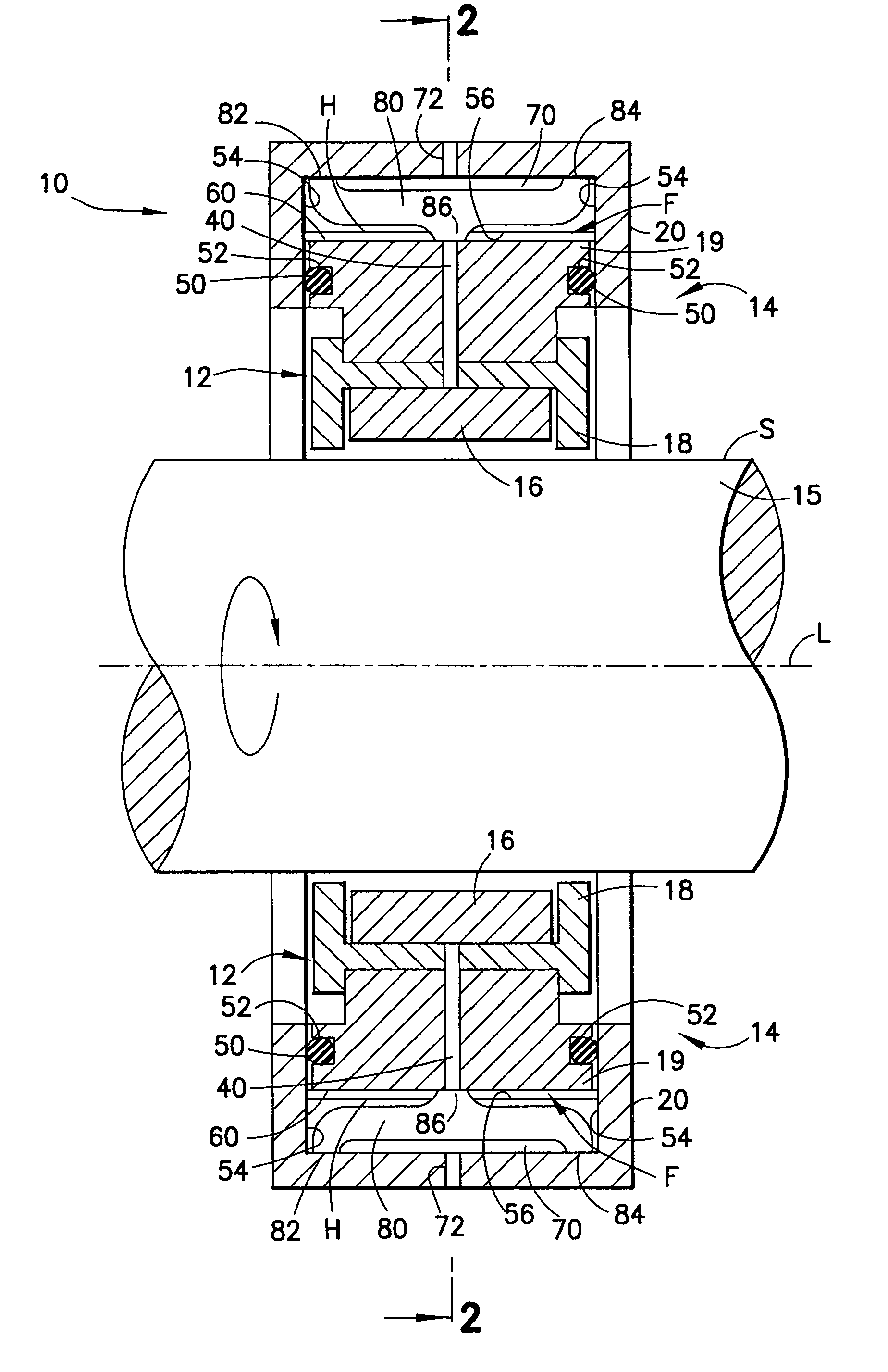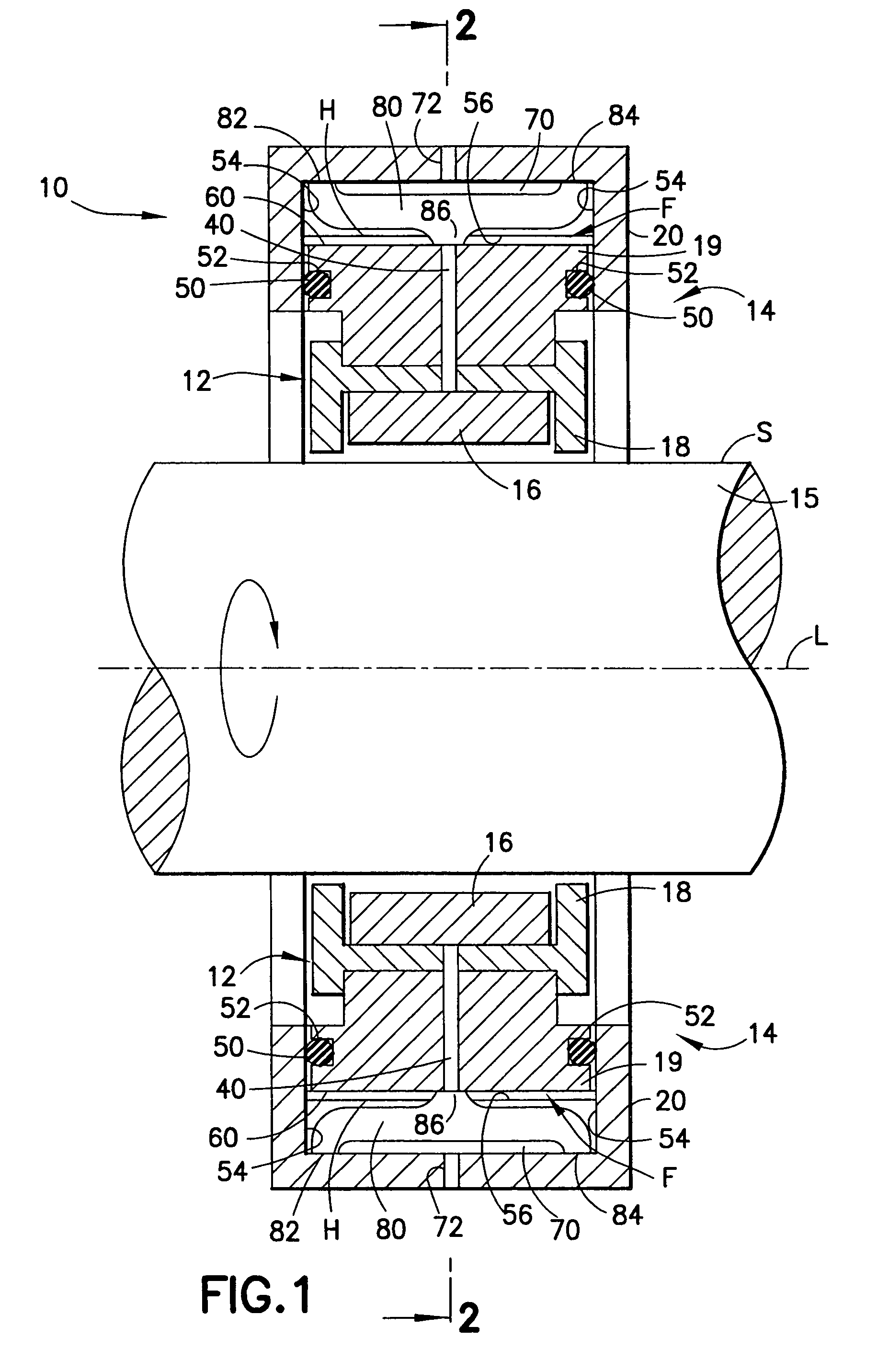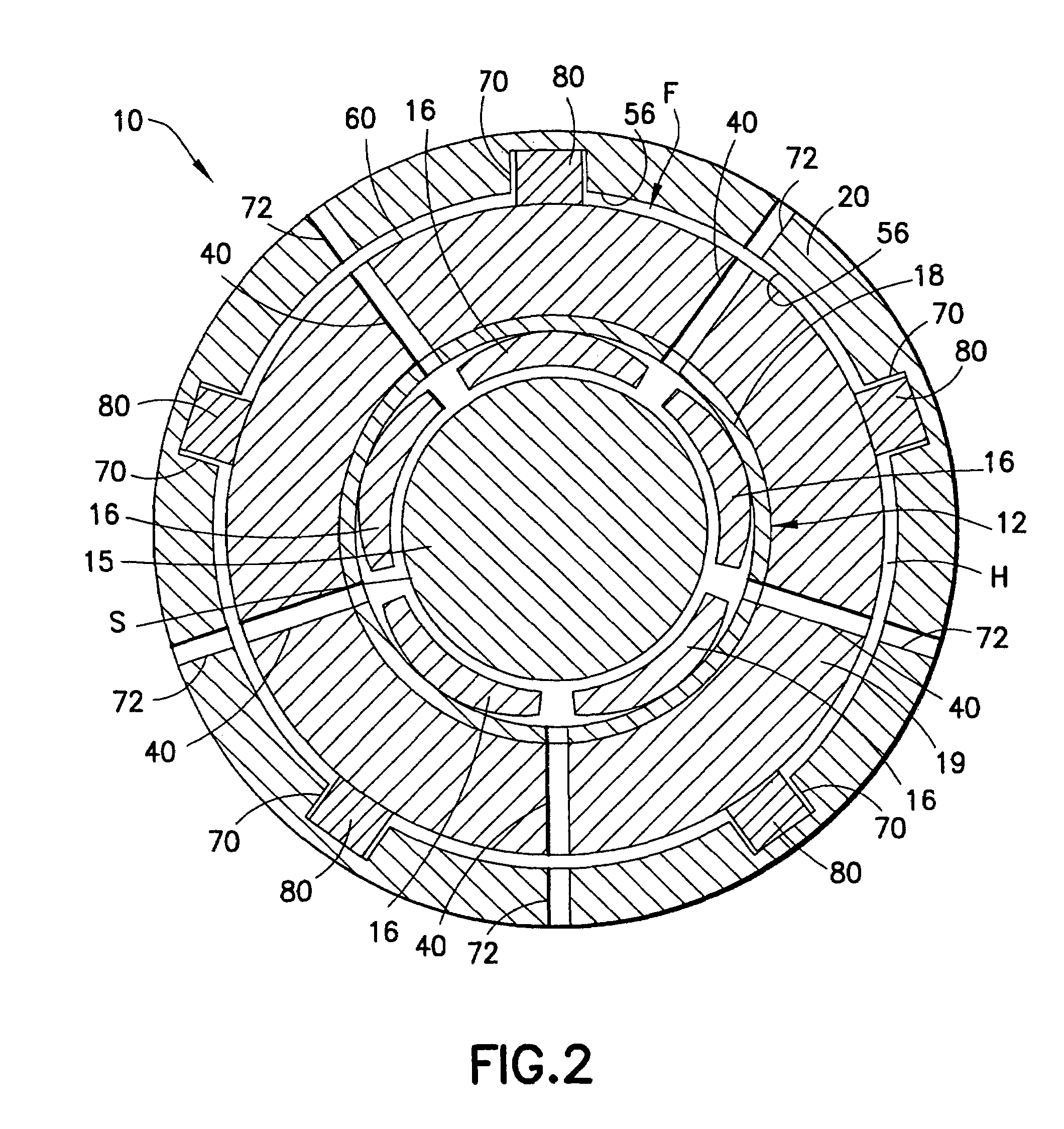Bearing assembly and centering support structure therefor
a technology of supporting structure and bearing, which is applied in the direction of elastic bearings, bearing rigid support, sliding contact bearings, etc., can solve the problems of poor damping properties, wear of corresponding components, and the centered position of the floating sleeve during operation, so as to improve the resiliency of the centering elements
- Summary
- Abstract
- Description
- Claims
- Application Information
AI Technical Summary
Benefits of technology
Problems solved by technology
Method used
Image
Examples
first embodiment
[0042]With continued reference to FIGS. 1 and 2 of the drawings, bearing assembly 10 is illustrated. Bearing assembly 10 generally comprises a bearing 12 and a bearing support structure 14 disposed about and radially supporting bearing 12. Bearing 12 is, in turn, disposed about a rotor shaft 15 aligned on a longitudinal central shaft axis L. As illustrated, the major components of bearing assembly 10, namely bearing 12 and support structure 14, are also symmetrical about axis L and rotor shaft 15. Rotor shaft 15 may be a solid element, as illustrated, or be provided as a cylindrical-shaped structure aligned on and rotatable about axis L. Rotor shaft 15 has an outer surface S that is engaged in bearing 12. Bearing 12 is illustrated as a tilt pad bearing as one possible embodiment of bearing 12. However, bearing 12 may also take the form of a roller bearing, comprising an inner race rigidly attached to rotor shaft 15, an outer race having an outer cylindrical surface and an annular si...
second embodiment
[0064]FIGS. 9A and 9B illustrate bearing assembly 10b with centering elements 150b. In centering elements 150b, intermediate beam member 166a is omitted and distal beam member 164b and base beam member 162b are connected by a central connecting “post” portion or member 168b of body 160b. Post member 168b will permit distal beam member 164b to deflect about post portion 168b and compress towards base beam member 162b when radial force is applied to centering element 150b. Base beam member 162b and distal beam member 164b may each define an elongated internal space 174b making these members relatively thin-walled in the vicinity of post portion 168b to allow for the deflection and compression of distal beam member 164b about post member 162b. One or both of internal spaces 174b may be omitted, if desired, in centering element 150b. Additionally, internal spaces 174b may each be alternatively provided as a plurality of individual internal spaces 174b, for example, in the manner shown i...
third embodiment
[0065]FIGS. 10A and 10B illustrate bearing assembly 10b with centering elements 150c. In centering elements 150c, base beam member 162c, intermediate beam member 166c, and distal beam member 164c define an overall S-shape for centering elements 150c. Intervening spaces 172c are defined between intermediate beam member 166c and base beam member 162c and distal beam member 164c and intermediate beam member 166c to allow deflection of distal beam member 164c and intermediate beam member 166c. Deflection characteristics of distal beam member 164c and intermediate beam member 166c may be controlled by the sizing of cut-out areas 180 in the areas of body 160c connecting intermediate beam member 166c to base beam member 162c and connecting distal beam member 164c to intermediate beam member 166c. Cut-out areas 180 may be provided in shapes other than the circular shape illustrated in FIGS. 10A and 10B, such as oval, elliptical or be simply elongated, generally polygonal shaped cut-out area...
PUM
| Property | Measurement | Unit |
|---|---|---|
| circumference | aaaaa | aaaaa |
| radial forces | aaaaa | aaaaa |
| speed | aaaaa | aaaaa |
Abstract
Description
Claims
Application Information
 Login to View More
Login to View More - R&D
- Intellectual Property
- Life Sciences
- Materials
- Tech Scout
- Unparalleled Data Quality
- Higher Quality Content
- 60% Fewer Hallucinations
Browse by: Latest US Patents, China's latest patents, Technical Efficacy Thesaurus, Application Domain, Technology Topic, Popular Technical Reports.
© 2025 PatSnap. All rights reserved.Legal|Privacy policy|Modern Slavery Act Transparency Statement|Sitemap|About US| Contact US: help@patsnap.com



